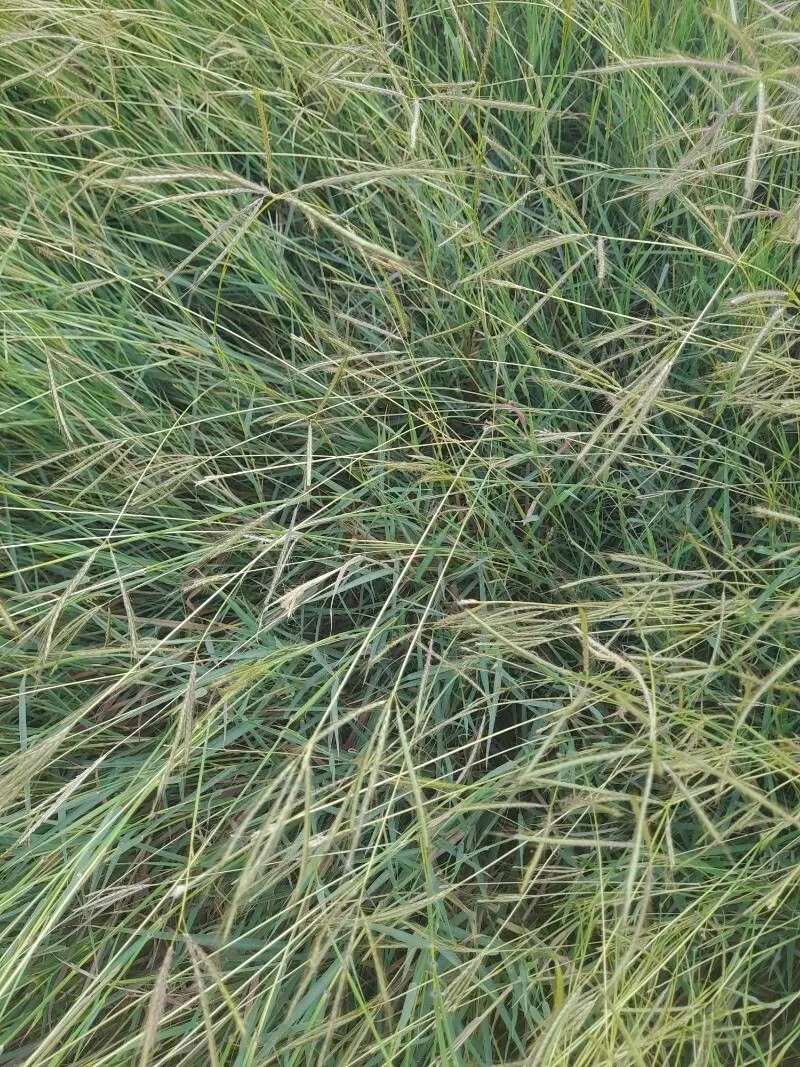
Author: (Forssk.) Stapf
Bibliography: D.Oliver & auct. suc. (eds.), Fl. Trop. Afr. 9: 178 (1917)
Year: 1917
Status: accepted
Rank: species
Genus: Dichanthium
Vegetable: False
Observations: Trop. & Subtrop. Old World
Kleberg’s bluestem, scientifically recognized as Dichanthium annulatum, is a prominent grass species belonging to the Poaceae family. This species holds significant importance due to its wide distribution across tropical and subtropical regions of the Old World. Originating from these regions, Kleberg’s bluestem has adapted well to various climatic conditions, making it a resilient and versatile grass.
First documented in botanical literature by D. Oliver and subsequent authors in “Flora of Tropical Africa” in 1917, this species was further classified by Stapf, solidifying its scientific identification. Over the years, its robust growth habit and adaptability have contributed to its prevalence in both natural and agricultural landscapes.
Kleberg’s bluestem is particularly valued for its use in pasture and forage systems. Its ability to thrive in different soil types and under various environmental stresses makes it an essential component in livestock grazing practices. The grass forms dense stands, providing substantial ground cover which helps in soil conservation and prevention of erosion.
The inflorescence of Dichanthium annulatum is characterized by its bluish-green spikes, which upon maturation exhibit a distinctive purplish hue. This trait not only makes it identifiable but also contributes to its aesthetic appeal in natural settings.
Furthermore, Kleberg’s bluestem plays an important role in ecological systems. It offers habitat and food for numerous fauna and promotes biodiversity. Its resilience to tropical and subtropical climates also allows it to contribute to revegetation projects and restoration efforts in degraded lands.
In summary, Kleberg’s bluestem is a versatile and resilient grass species that has garnered attention for its agricultural, ecological, and aesthetic contributions. Its widespread distribution and adaptability make it a crucial element in pasture management, soil conservation, and ecological restoration efforts, underscoring its value across various landscapes in the Old World tropics and subtropics.
Eng: kleberg’s bluestem
En: Kleberg’s bluestem, Kleberg bluestem
Ar: أبو قصيبه، حميره (حِميره), حمره (حِمره)، حمريت (حُمريت)، نجيل (نِجيل), رقيب (رُقيب), سيفون (سَيْفون، سِيفون)، سفون (سِفُون), فارسى، ركيبه (رِكيبه)
He: זקנונית הטבעות
Es: Pretoria
Taken Oct 10, 2022 by M. Hedayat (cc-by-sa)
Taken Oct 10, 2022 by M. Hedayat (cc-by-sa)
Taken Oct 10, 2022 by M. Hedayat (cc-by-sa)
Taken Oct 10, 2022 by M. Hedayat (cc-by-sa)
Taken Oct 10, 2022 by M. Hedayat (cc-by-sa)
Taken Oct 10, 2022 by M. Hedayat (cc-by-sa)
Taken Oct 10, 2022 by M. Hedayat (cc-by-sa)
Taken Oct 10, 2022 by M. Hedayat (cc-by-sa)
Taken Oct 10, 2022 by M. Hedayat (cc-by-sa)
Taken Oct 10, 2022 by M. Hedayat (cc-by-sa)
Taken Oct 10, 2022 by M. Hedayat (cc-by-sa)
Taken Aug 5, 2022 by Marc Roussin (cc-by-sa)
© copyright of the Board of Trustees of the Royal Botanic Gardens, Kew.
© copyright of the Board of Trustees of the Royal Botanic Gardens, Kew.
© copyright of the Board of Trustees of the Royal Botanic Gardens, Kew.
Taken Jan 1, 1900 by EOL − Gibran Morales C. (cc-by-nc-sa)
Taken Jan 1, 1900 by EOL − Más & Lugo-Torres (cc-by-nc-sa)
Taken Jan 1, 1900 by EOL − Gibran Morales C. (cc-by-nc-sa)
Taken Oct 10, 2022 by M. Hedayat (cc-by-sa)
Taken Dec 10, 2014 by OTS – Oviedo-Brenes, Federico (cc-by-nc-sa)
Taken Dec 10, 2014 by OTS – Oviedo-Brenes, Federico (cc-by-nc-sa)
Taken Dec 10, 2014 by OTS – Oviedo-Brenes, Federico (cc-by-nc-sa)
Taken Oct 10, 2022 by M. Hedayat (cc-by-sa)
Taken Dec 10, 2014 by OTS – Oviedo-Brenes, Federico (cc-by-nc-sa)
Taken Jan 1, 1900 by EOL − Gibran Morales C. (cc-by-nc-sa)
Taken Jan 1, 1900 by EOL − Más & Lugo-Torres (cc-by-nc-sa)
Taken Jan 1, 1900 by EOL − Más & Lugo-Torres (cc-by-nc-sa)
Growth form>: Colonizing
Growth habit>: Graminoid
Growth rate>: Rapid
Ph maximum: 7.0
Ph minimum: 5.5
Family: Myrtaceae Author: (F.Muell.) K.D.Hill & L.A.S.Johnson Bibliography: Telopea 6: 402 (1995) Year: 1995 Status:…
Family: Rubiaceae Author: Pierre ex A.Froehner Bibliography: Notizbl. Bot. Gart. Berlin-Dahlem 1: 237 (1897) Year:…
Family: Sapindaceae Author: Koidz. Bibliography: J. Coll. Sci. Imp. Univ. Tokyo 32(1): 38 (1911) Year:…
Family: Asteraceae Author: A.Gray Bibliography: Pacif. Railr. Rep.: 107 (1857) Year: 1857 Status: accepted Rank:…
Family: Fabaceae Author: Medik. Bibliography: Vorles. Churpfälz. Phys.-Ökon. Ges. 2: 398 (1787) Year: 1787 Status:…
Family: Aspleniaceae Author: (Cav.) Alston Bibliography: Bull. Misc. Inform. Kew 1932: 309 (1932) Year: 1932…